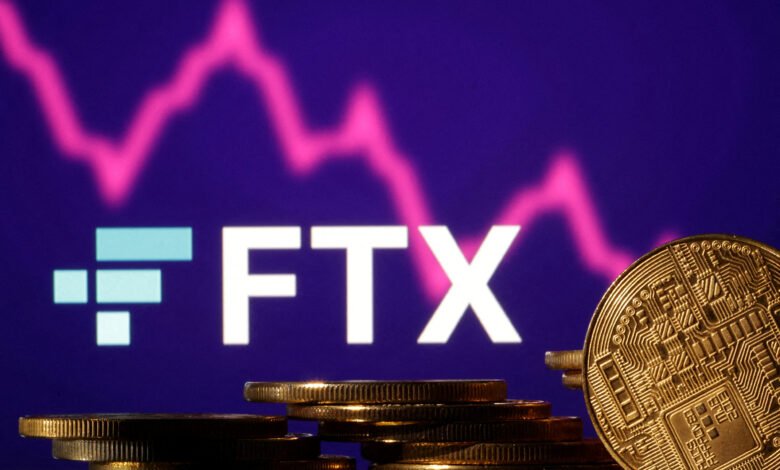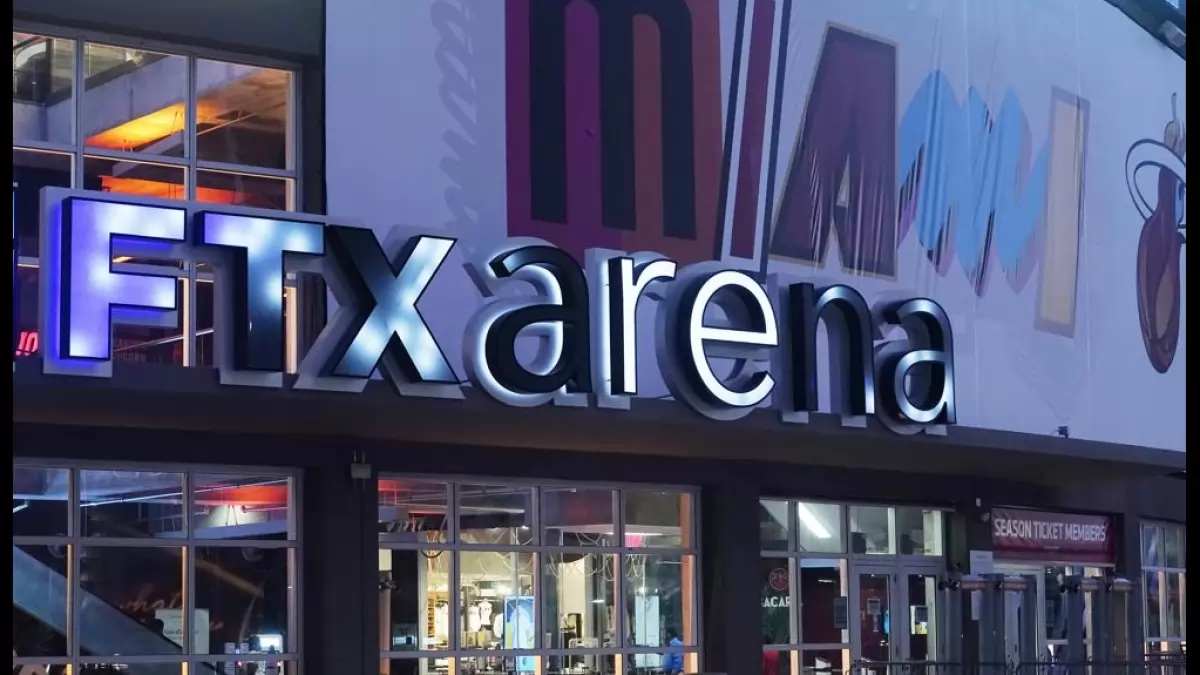What’s next in crypto exchange FTX’s bankruptcy?

According to one expert, the dire circumstances at crypto exchange FTX will make it very difficult for the company to mainly borrow new money that could be also used to reorganize the business or buy time for a sale.
Following its abrupt downnfall, the cryptocurrency exchange FTX filed mainly for the Chapter 11 main bankruptcy protection in the US on Friday, claiming it may owe money to currently more than 1 million creditors. Here is what the case probably holds in store.
What is the current status of FTX’s bankruptcy case?
When it came to filing “first-day” papers, which outline the company’s debts and also how it got into bankruptcy, FTX had an unusually slow start. When FTX’s new CEO, John Ray, detailed the “unprecedented” chaos at the company in the court documents on November 17, the reason for that delay became clear.
Ray, a restructuring expert with high decades of experience who oversaw the lengthy liquidation of energy company Enron after its collapse in 2001, said, “Never in my entire career have I seen such a disgusting failure of the corporate controls and also such a complete absence of trustworthy financial information as have occurred here.”
When FTX filed for bankruptcy protection, Ray took over as CEO. He said his top priorities right now are finding and securing assets, looking into claims against insiders like the former FTX CEO Sam Bankman-Fried, and working with numerous regulatory investigations both domestically and internationally.
According to University of the Pennsylvania law professor David Skeel, the dire circumstances at FTX will make it very difficult for the company to borrow the new money that could be used to also reorganize the company or buy time for a sale.
Has FTX been successful in protecting customer assets?
According to sources who spoke to the Reuters, Bankman-Fried secretly used $10 billion in the customer funds to support his trading firm Alameda Research, and also at least $1 billion of those deposits have vanished. The $740 million in cryptocurrency that FTX has located and acquired under its new management is “only a fraction” of the main digital assets that the company will try to recover for its creditors.

FTX has not confirmed Bankman-2021 Fried’s claim that its users held $15 billion on the platform. Customer deposits were not listed as balance sheet assets by FTX, and also Ray claimed that balance sheets created under Bankman-direction Fried’s could not be trusted.
FTX is also attempting to recoup more assets, including more than $372 million that was unintentionally taken out on the day the company filed for bankruptcy. According to the current Nov. 17 filing, FTX believes the company’s main co-founders and also other insiders may have additional knowledge about additional crypto wallets that are also unknown to the company’s restructuring team.
Will customers be refunded their money?
Customer accounts at main crypto platforms like FTX are not covered by the main Federal Deposit Insurance Corporation, in contrast to main bank deposits. Customers must also rely on the bankruptcy process because the U.S. government won’t intervene to cover customer deposits as it would in a traditional bank failure.
Customers will also need to wait for the bankruptcy court to decide whether they will receive anything back from a current bankrupt company because a Chapter 11 case stops attempts to recover assets from a bankrupt company. One of the major issues the court will have to decide is whether customers own the current cryptocurrency they deposited or if it belongs to FTX.
There isn’t much case law related to that issue. Both Celsius Network and Voyager Digital claimed ownership of all cryptocurrency held on their platforms in recent cryptocurrency bankruptcies. That implies that the cryptocurrency would be divided among all creditors after being combined with the assets of the bankrupt company. Customers would have relatively low-priority claims that are known as unsecured claims in that scenario.
According to Harvard professor Jared Elias, “it’s risky to feel like you have dodged a bullet because sometimes you didn’t.”
What additional dangers confront FTX customers?
The names, email addresses, and transaction histories of FTX customers may be made public due to the bankruptcy.
Transparency is essential to the bankruptcy process; the court must at the very least be aware of who owes money, how much, and how to contact creditors. Customers of cryptocurrencies expect anonymity, which is at odds with the courts’ preference for transparency.
FTX Exchange: What Is It?
The FTX Exchange, a prominent centralized cryptocurrency exchange, was renowned for its knowledge of derivatives and leveraged products. In 2018, MIT alumnus and former trader for global exchange-traded funds at Jane Street Capital Sam Bankman-Fried founded FTX.
The company offered a range of trading products, including leveraged tokens, derivatives, options, and volatility products. It also provided spot markets for more than around 300 cryptocurrency trading pairs which includes BTC/USDT, ETH/USDT, XRP/USDT, and its own native token FTT/USDT..
Early in November 2022, the exchange and the businesses it surrounded started to decline rapidly.
FTX, based in the Bahamas, and its US affiliate, FTX, had similar management teams but different capital structures. Only FTX US allowed trading by Americans.
On November 11, 2022, FTX filed for Chapter 11 bankruptcy protection, and Bankman-Fried resigned. According to John Ray III, the exchange’s new chief executive, the failure of corporate control was to blame for the collapse of the exchange. And Ray has some experience with devastating business failures; after the 2001 accounting scandal that led to the collapse of energy trader Enron, he assisted in managing the company.
Numerous inquiries and legal actions have followed. Regulators are investigating whether FTX used customer funds to support Bankman-Fried-founded trading company Alameda Research, which was founded and almost entirely owned by the latter. Following his resignation, Bankman-Fried spoke with the New York Times and claimed that regulators “make everything worse” and that he was unaware of the amount that Alameda had borrowed from FTX. FTX, which once had a market value of $32 billion and owes $8 billion in obligations, may have as many as more than 1 million creditors, according to its bankruptcy filing.
Fundamentals of FTX Exchange
In the beginning, FTX attracted crypto investors of all experience levels, from novices to seasoned professionals, or also in crypto jargon, from newbies to whales, thanks to its broad range of products and user-friendly desktop and mobile trading apps. The FTX platform provided a wide variety of order types and from straightforward market orders to make trickier trailing stop raquets.

Nine fiat currencies which includes the US dollar, euro and British pound, Australian dollar, Canadian dollar and Swiss franc, Brazilian real and Ghanaian cedi, and Argentinian peso, were supported by FTX and could be deposited and withdrew by investors via wire transfer. The Hong Kong dollar, Singapore dollar, and also South African rand will soon be also functional, along with the main Turkish lira and also Japanese yen, which are also mainly used in a limited capacity.
FTX Key Items
Futures, leveraged tokens, options and MOVE, and spot markets were among FTX’s main offerings.
Futures: Using more than 100 quarterly and the perpetual futures pairs with margins of up to 101x, traders could place both long and also short bets on the top cryptocurrencies. To open and also maintain positions, stablecoins like USD and tether (USDT) are used as collateral.
Leveraged Tokens: FTX provided traders with up to 3X leveraged exposure against the main underlying trading pair through ERC20-based tokens. For instance, the leveraged token would also increase in value by 30% if a trader had opened a BULL/USD – 3x long position in Bitcoin and also the price of Bitcoin rose 10% since the purchase. The leveraged tokens of FTX did not require any margin.
Options: A variety of call and put options that gave the holder the current right but not the obligation to buy or sell at a future strike price allowed traders to speculate on future price direction and insure against their open positions.
These contracts, which are essentially a play on volatility, allowed traders to wager on how much a cryptocurrency price would fluctuate over a specified period of time, regardless of the direction. The contract was profitable as long as the value of the underlying cryptocurrency increased or decreased by more than a predetermined dollar amount.
Spot Markets: FTX provided exposure to popular cryptocurrencies like Bitcoin, Ethereum, Binance Coin, Chainlink, and Ripple’s XRP by offering more than 100 different spot trading pairs.
Near about 60 cryptocurrency and currency spot trading pairs, cryptocurrency swaps, and Bitcoin mini futures were all available through FTX US. Options contracts with values of 0.01 Bitcoin and 0.1 Ether were also available. Additionally, it ran a market for non-fungible tokens.
Regulation of FTX
After relocating from Hong Kong in September 2021, FTX was founded in Antigua and Barbuda and established as its corporate headquarters in the Bahamas. The Bahamas Securities Commission oversees its main division FTX Digital Markets Ltd. Residents of the United States can’t use the exchange’s services.
Crypto traders in the United States had access to FTX US, a registered money services company with FinCEN. LedgerX was also fully acquired by FTX US in the month October 2021, after which it was renamed FTX US Derivatives. The U.S. Commodity Futures Trading Commission has currently granted FTX US Derivatives licenses as a main Derivatives Clearing Organization, Swap Execution Facility, and also Designated Contract Market (CFTC).
According to the maker and taker model, FTX fees for trading competitive futures and spot markets ranged from 0.04% to 0.07% for the market takers as of September 2022. Leveraged tokens, meanwhile, had 0.10% creation and also redemption fees as well as 0.03% daily management fees.
For the majority of crypto assets, FTX did not impose deposit or withdrawal fees. One of the withdrawal of less than about 0.01 bitcoin per day and all withdrawals of bitcoin greater than 0.01 were free. The fee for additional small bitcoin withdrawals was 0.1%.
Fiat currency withdrawals was valued at also more than $5,000 USD and also one withdrawal below that value per week were free.

As of September 2022 the FTX US trading commissions for market takers ranged from 0.05% to 0.2%. With the exception of debit and credit cards, fiat currency deposits could be made using wire transfers, ACH, debit or credit cards, and the Silvergate Exchange Network. Withdrawals via wire transfer of more than $5,000 USD were free. Below that amount, one withdrawal per week was also free; however, any additional wires incurred a $25 fee.
Blockchain transfers had no deposit charges. With the exception of ERC20/ETH and small bitcoin withdrawals, FTX US covered the blockchain fees for all token withdrawals.
Depending on the platform and place of the trade, non-fungible token (NFT) fees changed. Users of FTX US pay $1 to list an NFT using the self-service tool, and the seller is charged 2% of each sale or trade.
As an alternative, the buyer and also seller on each side of the trade paid 5% in fees to FTX (the non-US platform).
Security FTX
In three key areas—personal accounts, exchanges, and other security domains—FTX boasted risk management features.
Secure Personal Accounts
The business demanded a combination that adheres to complicated character requirements in order to register an FTX account. Additionally, it looked for predictable patterns in the password requests; any accounts that didn’t comply were prevented from registering.
Furthermore, FTX mandated that users set up two-factor authentication (2FA). All withdrawals required the use of 2FA. Additionally, if 2FA contact information was removed from an account or the password was changed, FTX locked withdrawals for that account.
FTX kept an eye on and tracked user activity to look for odd behavior. If FTX detects an unusual login attempt, FTX alerts the account owner for additional confirmation that they are indeed logged in.
Chainanalysis was hired by Exchange Security FTX to find potentially suspicious trading activity. Chainanalysis is a real-time compliance solution for anti-money laundering that keeps an eye out for sizable deposits or unusual activity.
To guarantee there are liquid assets available to facilitate trading, FTX also managed an FTX Backstop Liquidity Fund. The liquidity fund balance of FTX was about $200 million as of September 2022.
Additional Security Measures
With FTX, users could use subaccounts to create unique logins. Multiple users can log into the same account simultaneously thanks to subaccounts; however, each user will have independently adjustable permission levels. Every log-in can be set to read-only (can not make any trades but can view historical activity). A login’s ability to withdraw money can also vary between different logins.
Users of FTX could also specify security restrictions for wallet addresses or internet protocols (IPs). This makes sure that only authorized internet addresses or digital wallets can make transactions in connection with a given account.
Benefits and Drawbacks of FTX Exchange-
Benefits of the FTX Exchange
When these entities hold FTT, there were additional advantages. 15% of fees were discounted for holding $10,000 worth of FTT, and 25% of fees were discounted for holding $100,000 worth of FTT.
Users were given a special affiliate link by FTX. Depending on how much FTT was staked, the referring user received between 25% and 40% of the new user’s fees when they signed up using that affiliate link. They also received 5% of their fees back. According to the quantity of referrals, the volume generated by users, or other factors, FTX reserved the right to compensate users more.
Negative aspects of FTX Exchange
There were a number of potential drawbacks to the exchange even at its peak. For those who prefer more personal interaction, such as live chat support, other exchanges may be more appropriate. FTX encouraged its users to submit support tickets when they needed assistance. In addition, Americans were not permitted to use the FTX global platform. Instead, Americans used FTX US for regulatory purposes.
edited and proofread by nikita sharma



